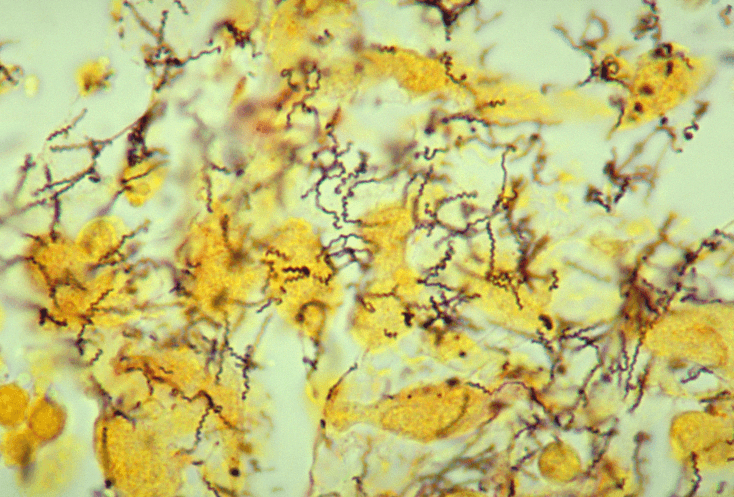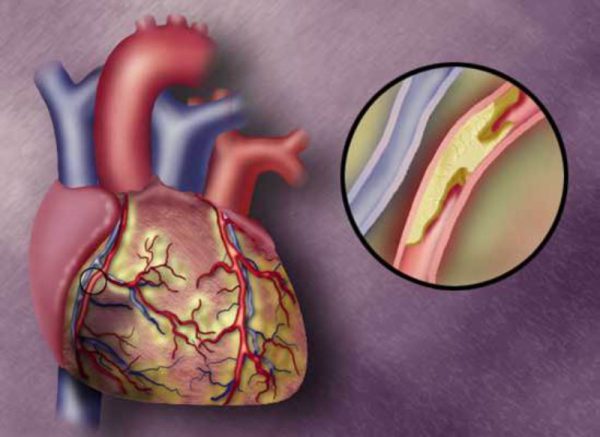Syphilitic aortic syndrome
Author Ольга Кияница
2018-03-05
Syphilitic aortic (CA) is an inflammatory disease caused by a pale treponema, which affects the walls of the aorta. Pathology is a complication of the main disease - syphilis. Due to an increase in the number of patients with syphilis, cases of aorta have become more frequent.
The incidence of syphilis is relatively higher in developing countries. For example, in 1999 there were about 12 million infections, of which 90% came from developing countries.
Stamm LV (February 2010). Global Challenge of Antibiotic-Resistant Treponema pallidum. Antimicrob Agents Chemother. 54 (2). with. 583-9
Syphilis is quite often determined in pregnant women - every year from 700 thousand to 1.6 million cases. In this situation, spontaneous abortions, stillbirth and congenital syphilis are often developed. Quite often there is also syphilitic aortic, which further complicates the course of the illness.
Video Aortic aneurysms and syphilitic aortic
What is syphilitic aortic?
The first description of the disease dates back to 1876. Until this time, 400 years and more were diagnosed with syphilis in various parts of the world. During the development of this disease, not only the aorta, but also internal organs, a brain, a bone and articular system affects. Syphilis is characterized by a chronic course that can last for 3-5 years or more.
Syphilitic aortic occurs in different countries and its share accounts for 0.2% -0.7%. So far, antibiotics have not been opened and they have not started to be used extensively. Every year from the CA dies up to 40 thousand. people of different ages.
Features of syphilitic aortic:
- Late develops after about 4-20 years of infection.
- The first signs of aortic may appear in 40-50 years.
- CA is more often defined in men.
In its development, CA often relates to the ascending aorta department. The specificity of the defeat concerns the aortic wall in the sinus valsalvae area. This aortic site is the mouth of the coronary vessels of the heart. In some cases, the lesion is transferred to a nearby located aortic valve, as a result of which its flaps deform. The coronary vessels itself are not infected, but with the progression of the disease, a narrowing of their mouth is observed, which causes the stenocardial attacks, and in the worst case, acute heart failure.
Reasons
Aortic develops against the background of visceral syphilis due to infection of the patient with a specific pathogen - a pale treponema, or spirochete. She has a spiral shape, a high degree of mobility, living inside the cells of the host. It is well passed through the mucus and various biological fluids.

Syphilitic mesoarthritis (m syphilitica; sync mesocardiaortitis) M. As a rule, the ascending aorta develops in the tertiary period of syphilis and is characterized by focal necrosis and collapse of collagen and elastic fibers, deposition of salts and formation of infiltrate containing lymphocytes, plasma cells and histiocytes.
Great Medical Dictionary.2000
The disease spreads only between people, transmitted mainly through disordered sexual intercourse, as well as during pregnancy. Spirochete is transmitted directly from a sick person to a healthy one, whereas without a host can live for no more than a few days. The reason for this is the small pathogen genome, which can not encode the metabolic pathways.
Recently, the virulence of the spirochet has decreased. This is due to the availability of quality treatments for many patients. Also, the widespread use of antibiotics of different strengths allowed to significantly reduce the prevalence of syphilis in the twentieth century, and with it - syphilitic aortic.
Pathogenesis
Syphilitic aortic develops in the late stages of the underlying disease - syphilis. It is associated with enhanced reproduction of the pathogen and its distribution by the hematogenous and lymphogenous pathway along the body. Spirochette is introduced into the intima of the vessel (aorta), due to which the obliterating endarteritis develops. Any wall of the vessel may be amazed, because of which panaortritis occurs. In other cases, only the individual layers of the vessel are inflamed, then they say about endoarthritis, mesozorti and periauritis.
Syphilitic aortic may be:
- ascending part of the aorta;
- aortic arch;
- the descending part of the aorta;
- abdominal aortic part.
Aortic is accompanied by enlargement of aortic lumen, deformation of its wall. Its uneven thickening and thinning are observed. The inner wall acquires roughness, becomes like a shagreen skin. By reducing the elasticity and elasticity of the aorta, the risk of formation of aneurysm or bundle increases.
Late stages of the disease are characterized by the formation of syphilitic gums, which are located on the wall of the aorta. Also, the long course of the ascending part of the aortite is accompanied by sclerosis and calcinosis of the vessel, which leads to insufficient aortic valve of varying degrees of severity. In addition, with the background of CA begins to progress atherosclerosis, which negatively affects the course of the disease.

Forms
Against the background of the development of visceral syphilis, aortic may occur in various forms:
- purulent
- necrotic
- granulomatous.
The acute course of the disease is characteristic of purulent and necrotic aortic. For a granulomatous form chronic chorus is characteristic.
Purulent aortite proceeds by type of abscess or phlegmon. By the action of purulent formations, the walls of the aorta seem to melt, which leads to the formation of perforations and aneurysms. Formation of a similar form of syphilitic aortic occurs more often with inflammation of the tissues surrounding the vessel.
Necrotic aortic is more common in septic conditions when systemic damage to the vascular system and endocardium occurs. Subsequently, septic aneurysm develops. At CA, necrotic aortic rarely develops.
Clinic
During a syphilitic aortite, three clinical variants are distinguished:
- The clinic is more marked with coronary insufficiency, which is associated with narrowing of the mouths of the coronary vessels. The severity of the symptoms depends on the degree and progression of arterial stenosis. In this variant of the CA, the following symptoms can be observed:
a. Absence of obvious signs, which is explained by the slow development of the pathological process.
b. Angina pectoris, accompanied by pain in the heart and removed by nitrates.
c. Cardiac insufficiency, more typical of severe forms of CA, manifested by shortness of breath, edema, arrhythmias.
- The disease manifests itself as a characteristic of aortic insufficiency. Frequently symptoms of coronary insufficiency are added. When auscultation is determined by characteristic noises over the aortic valve (systolic and proto-asthmatic). This variant of the course is diagnosed in almost half of patients with SA at the age of 40-50 years.
- Pathology is manifested by aorthalgia , but often occurs asymptomatic. Pain is characterized by the absence of irradiation in the hand, also nitroglycerin does not help and there is no visible relationship with physical activity. This pain lasts longer than with a stenocardial stroke. In some cases there is a pertussis-like cough and suffocation.
At an early stage in the development of the disease on two arterial arteries, the pulse in comparison may differ. This is due to squeezing an enlarged part of the aorta of one of the carotid arteries.
Diagnostics
Begins with a physical examination of the patient. During the inspection, the following changes are determined:
- Syphilitic chancres and other manifestations characteristic of the disease are visible on the skin.
- Signs of aortic insufficiency (visible pulsation of large arteries, low diastolic and high systolic pressure).
Auscultation of the heart is then performed. During its conduct one of the characteristic features is determined - the accent of the second tone at the place of listening to the aortic valve. Other changes in the form of noise in the diastole and systole phase may also be noted.
From the instrumental research methods, the following methods are used:
- Electrocardiography - helps to see the hypertrophy of the left ventricle, which leads to failure of the aortic valve. Other characteristic features are absent.
- U.S. - the enlargement of the aorta is visible, using dopplerography becomes noticeable aortic insufficiency.
- X-ray diagnostics - can also confirm the expansion of the aorta, in a number of cases, calcifications are determined in the vascular wall.
- Serological studies - conducted to determine specific antibodies to the pathogen.
Treatment
Syphilitic aortic is treated with the participation of a dermatovenereologist.
After diagnosis, patients are sent to specialized departments located in the territory of infectious hospitals or into the venereal department.
Obligatory hospitalization is subject to sickness:
- over 60 years old;
- with complicated course of syphilitic aortic;
- when intolerance to drugs of penicillin series;
- at the later stage of the disease;
- with a burdened somatic anamnesis.
Therapy for syphilitic aortic is identical to the treatment of visceral syphilis. The only antibiotic therapy should be done cautiously, since after it is started, the pathological process is often activated, which can lead to coronary insufficiency.
Standard therapy for visceral syphilis includes:
- Antibiotic therapy with preparations of cephalosporin or penicillin series.
- Symptomatic treatment that may include beta-blockers, diuretics, vasoprotectors, and the like.
In complex cases, when aortic is complicated by aneurysm, surgical intervention is performed with the patient's perceptible state of health.
Forecast
Depends on the course of the main illness. If syphilis was detected at an early stage of development, after which it was possible to carry out appropriate treatment, then the prognostic conclusion is relatively favorable.
The severe syphilis does not allow the patient's health to be so strengthened that clinical signs are not manifested. Drugs can relieve symptoms, but despite this there is a chronic course of the disease, with periods of exacerbation and restlessness of the pathological process.
It is important to understand that in syphilitic aorta, complete recovery is impossible, since the largest vessel in the human body has been subjected to serious changes and deformations.
The most unfavorable prognosis is with aneurysm developed on the background of syphilitic aortic. When it occurs, the form of education, its size and location affects the predictive value.
Prevention
The main way of preventing the development of syphilitic aortic is to treat syphilis at an early stage of development, then there will be no prerequisites for the emergence of CA.
Specific prophylaxis of syphilis does not exist, that is, there is no vaccine that would protect a person with a 100% guarantee of the pathogen. Therefore, high moral values should be adhered to in order to avoid infection by such a severe infection.
Video Treatment for syphilis. Consequences, complications and prevention of syphilis
